Yesterday I wrote an open email to a widely read music industry newsletter re the longstanding mistreatment of songwriters in the entertainment industry, veering off into the music industry ignoring the Internet until it had almost swallowed them up. Today, Mark Cuban posted this on his Facebook page which led to it spreading virally. I’ve had so many people email me and send me Facebook messages today I decided to post what I wrote myself:
Hi, Bob (Lefsetz). I’m Allee Willis. Songs I’ve written include September, Boogie Wonderland, Neutron Dance, What Have I Done To Deserve This, the Friends theme and the Broadway musical, The Color Purple. One of my earliest hits, Lead Me On by Maxine Nightengale, was co-written with David Lasley, who Andre Pessis talked about in his email to you. We also wrote the first cover I ever got, Got You On My Mind, by Bonnie Raitt in 1974. I’m weighing in because in 1981, after getting hundreds of songs cut in just a couple of years, I was the first songwriter who tried to unionize writers because of all that Ellen Shipley wrote about and more. I was also the first pop songwriter I know of to embrace the Internet in 1991. I started designing a collaborative social network in 1992 and, much of that time with my then partner, Mark Cuban, got laughed out of publishing and record company offices when we suggested they take the Internet and all digital technologies seriously.
The songwriting union never got off the ground as much because of the ever-confusing work for hire issue as the fear many songwriters had of being blackballed. Our mistreatment wasn’t the dirty little secret of the music industry. If it were a secret that at least would have been something. In reality, it was a non issue, not even a notch in the totem pole of consciousness.
I’ve written with and for hundreds of incredible artists and my songs have been at the top of the Pop, R&B, Jazz, Country, Dance and Alternative charts. I absolutely love writing songs and composing scores. But with success came an emptiness from the 1001 ways to screw a songwriter, long accepted as standard industry practice. This was coupled with a growing trend that if you were a songwriter who wrote for artists or producers other than yourself what you had to write to get records was progressively more homogenized. The dumbing down killed me even more than the screwing.
Other things that made me nuts (and thankfully led to a massive branching out of my career beyond songwriting): A) Writing up to ten songs for someone and only seeing one or two make the album despite being told repeatedly you’re the only writer working with them. (Where there’s no payment there’s no accountability.) B) Artists and producers sitting on songs for months and years until they had enough of them that the earliest songs felt old and they were cast out like a homeless kitten with one leg. C) Giving away pieces of publishing and songwriting shares just to get cuts lest your spot be filled by a more de-spirited and desperate songwriter than yourself. D) Settling for mere songwriting credit when your demo was used as the actual record – I was literally told by a major female artist that I didn’t deserve credit as a producer or arranger as I was “only the songwriter and that’s what songwriters do”. E) Babysitting artists who had absolutely zero songwriting chops, doing whatever it took to keep your brain functioning as they deliberated whether an ‘a’ or ‘the’ was better for their already idiotic lyric. I’ve often said that unless you were the artist yourself, being a songwriter was like changing towels in the restroom, only difference being that the restroom attendant got paid.
Probably because many of my early cuts were with instrumental artists like Herbie Hancock and Weather Report or male bands like Earth Wind & Fire, coupled with the fact that to this day I don’t know how to read, notate or play music, it was falsely assumed I was just a lyricist. I was given tons of tracks to put words to. Oftentimes I would spend 18 hour days putting words to whole songs only to be told when I handed them in that only the choruses were going to be sung. Is songwriters’ time so less valuable than anyone else’s that they can’t be told this when they’re given the track?
And then there’s movie soundtracks, where songs are sent out as temp tracks to be copied by other writers. One of the last straws for me was when I received a copy of my own song, Neutron Dance, already out on a Pointer Sisters’ LP, and told to rip it off for Beverly Hills Cop. After my co-writer, Danny Sembello, and I stewed for a couple of weeks we decided no one could rip us off better than ourselves. We wrote a parallel song that mimicked the lyric – Neutron Dance’s “I don’t want to take it anymore, I’ll just stay here locked behind the door” became “I can’t stay here while I go nowhere” in the new song. We slightly adjusted the drum track. We never heard anything after we submitted it – another standard practice after you’re hounded to hand something in. Three weeks before the film was released we found out that only because Jerry Bruckheimer pulled a tape out of his wastebasket that his song screener had passed on and checked it to make sure he could tape over it did he hear our copy song, Stir It Up, and insist it go into the soundtrack. They never found a better song than Neutron Dance and that stayed in too. Not only did I win a Grammy for Best Soundtrack but, in one of my favorite musical moments, I was named one of the most dangerous subversives living in the United States by the Communist government when they mistranslated the song as Neutron Bomb.
A decade later, in fairly infamous songwriting lore, two of the three producers of Friends, a full year after the song was a hit, demanded songwriter royalties because they had given me notes. I don’t know very many composers who write for film or tv who don’t get notes from producers or directors. By that point I was full throttle into my interactive career, building my prototype for willisville, my social network, and spending every dime on it that I earned from consulting for Microsoft, AOL, Silicon Graphics, Electronic Arts, Fox, Disney, Warner Bros. and Intel, who partially funded the prototype build (tho in reality I was stuck adding music and visuals to an excessively dorky technology they had already invested in). So I just gave in and watched my share of the Friends theme plummet because, as I heard it, these producers always wanted to be composers. To add insult to injury, The Rembrandts never agreed to the song being released as a single as they resented not writing it by themselves so despite it being one of the biggest airplay records of the year singles income was nil.
In 2006, I had songs in three of the Top 10 films of the Year – Babel , Happy Feet and Night At The Museum. I didn’t know about any of them until I sat in the theater and heard them. Then it meant spending money to hire someone to track them down and to see if I’d been paid. Shouldn’t the songwriter, not to mention co-copyright owner, be informed and allowed to negotiate when their songs are used?
Currently, I have a theme to a hit VH-1 show that’s already run one season and is filming the next right now. The production company still hasn’t submitted cue sheets to BMI for season one and the credits are so small and run so fast no one can even see my name which, I guess, isn’t a real problem as songwriting credits aren’t even listed.
Fate in the theater world is not much better. Depending on the producer, composers and lyricists have little to no say about the way their music is arranged or mixed or how their show is promoted. Musicals take an average of five years to write so this can be especially heartbreaking.
The blessing of all of this was that very early on I was so unhappy I started to paint, soon after motorizing my art to my music. This led to art directing tons of music videos for people like The Cars, Debbie Harry and Heart. I kept writing songs, still loving the actual act of songwriting, and also because my publishing deals helped finance each new field I went into. But music publishers were not great at recognizing the value of multi-media careers. Brain dead might be a more accurate description. Despite selling close to 50,000,000 records my advances were numbifyingly low compared to writers who had much less success. As opposed to thinking a broad artistic vision might actually enhance the contribution I could make my multi-medianess was looked at as a threat to the number of songs I could churn out. The exception to publishers wearing blinders (altho the low advances still persisted) was Kathleen Carey at Unicity (MCA), who hooked me up with Pet Shop Boys by selling their manager some of my art which led to me being hired to do their portrait. During the sitting Neil Tennant put it together that I was the same A. Willis on some of his favorite records and we started writing WHIDTDT that night. And also, Judy Stakee at Warner/ Chappell, who took my interest in digital technology seriously and introduced me to Mark Cuban in 1992. Despite this, W/C would hear nothing of removing my song quota and letting me function as their Internet liaison, scoffing at my predictions that things like CDs and record stores would cease to exist and radio play would become irrelevant. Anyone who cites Napster as the official beginning of the fall of the record industry still has their head in the sand.
These days I’m living my dream, finally singing my own songs for the first time since my one and only Epic album, Childstar, in 1974, integrating the songs with my art, videos and online worlds. My first video, It’s A Woman Thang, has close to 1,000,000 views with no promotion at all and was a winner in the Viral category of the 2008 Webbies. The second one was featured on YouTube and won four W3 awards. The latest, Hey Jerrie, featuring me and a 91 year old female drummer on an oxygen tank, was the twelfth most popular video in the world on YouTube within 48 hours of its release a few months ago. These days, a least if I get screwed I’m screwing myself, which is ultimately more satisfying as I can always get a meeting with the person doing the screwing. I’ve been toying with business models on the web for eighteen years. I may not be rich from it yet but I’m rich as an artist with a larger and larger loyal following which, ultimately, is the greatest reward of all.
Reinvention was always easier for me than letting my personality and pride be clubbed out of me like a baby seal. I have a had a blessed life. I have watched myself go from battered songwriter grabbing at whatever crumbs were thrown my way to a strong, centered and fearless artist. I’m a better songwriter now than I ever was. I still have the same old bullshit befall me as a songwriter but I don’t stick around long enough to suffer. It’s been a long, concious battle but as Celie says in The Color Purple, “I’m Here”. Very much here. I thank the publishers and record industry for doing to us what Wall St. and the banking industry did for the American people – take such advantage and pay us so little regard that we’re stripped back to nothing, individuals who now have more chance than ever to do something spectacular on their own and change the world.
Allee Willis
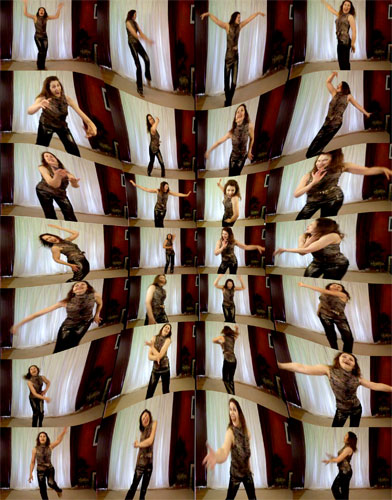










































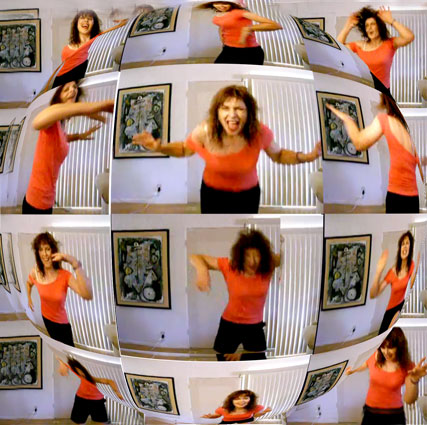
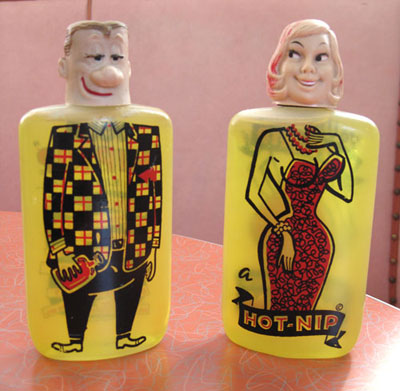
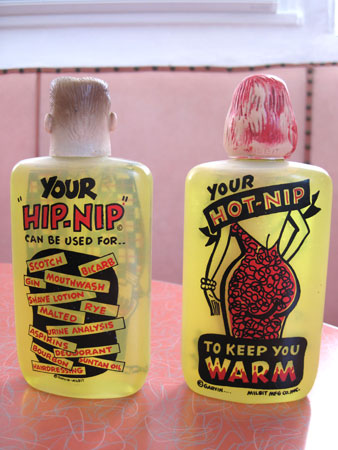


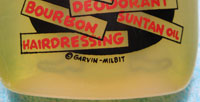
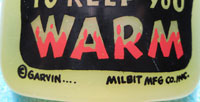 “Milbit” is also carved into Hot Nip’s neck while Hip Nip’s remains bare:
“Milbit” is also carved into Hot Nip’s neck while Hip Nip’s remains bare:

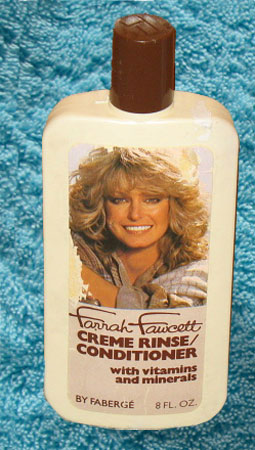
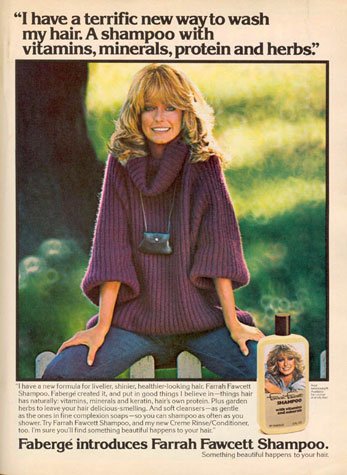

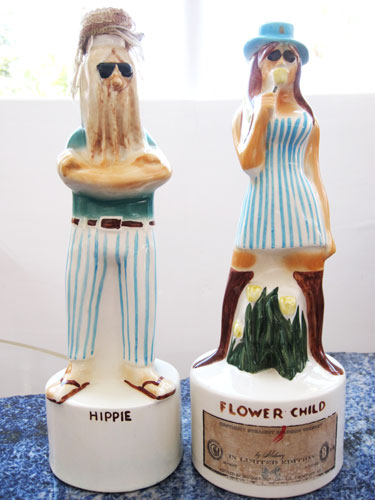


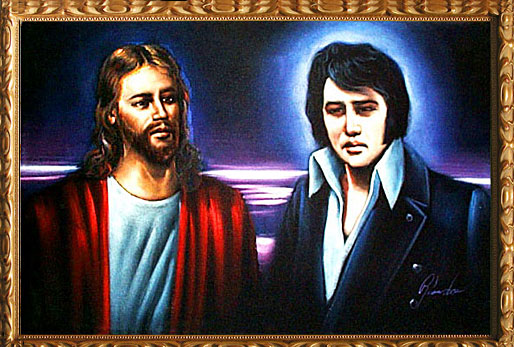



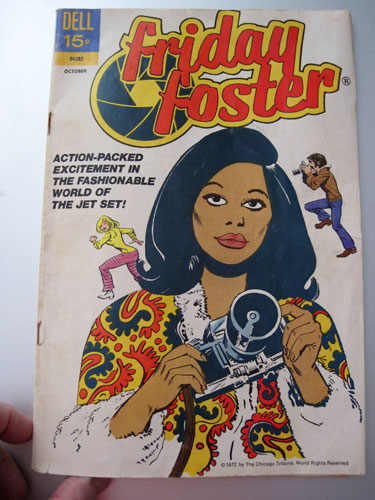
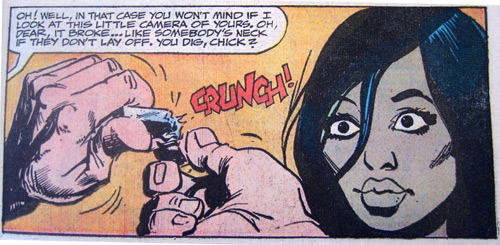
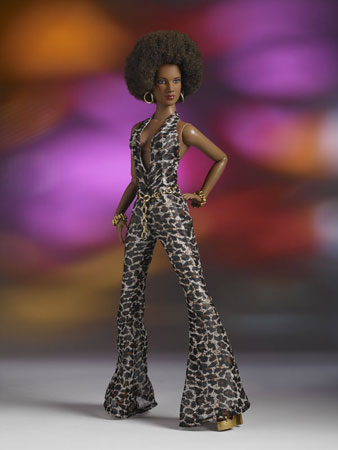
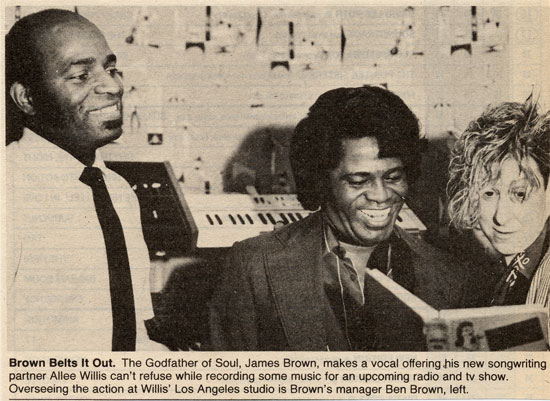
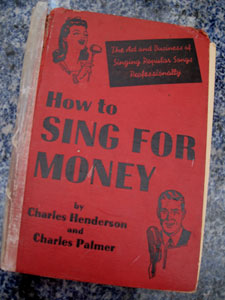
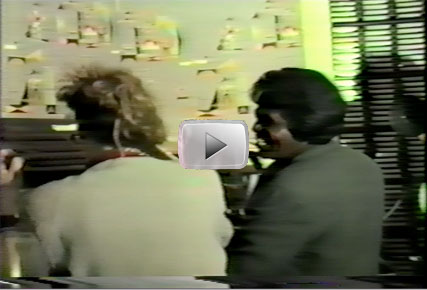
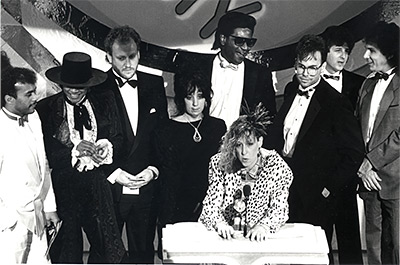 Winning the Grammy in 1986
Winning the Grammy in 1986







